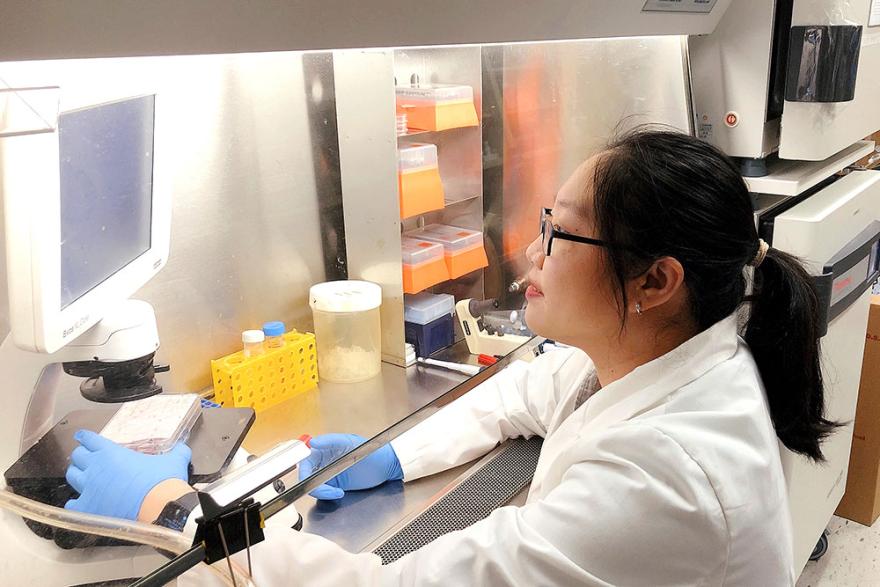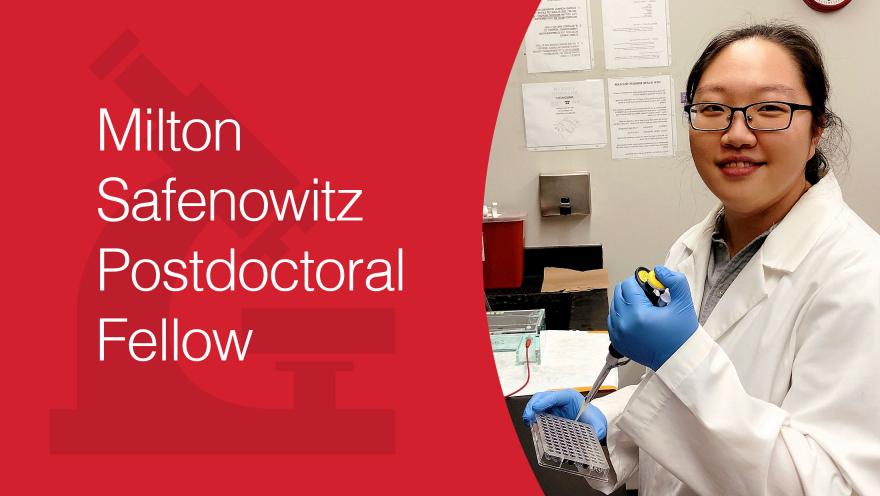ALS doesn’t stop and neither do we. The reality is, people with ALS can’t wait for treatments and a cure, and just as importantly, the tireless researchers working together around the world can’t wait to make the next breakthrough. Researchers like our 2019 Milton Safenowitz Postdoctoral Fellowship Program recipients.
Our Milton Safenowitz Postdoctoral Fellowship Program continues to support young scientists and is the only program of its kind specifically funding early ALS postdoctoral fellows eagerly searching for a cure.
The awards were founded in memory of Mr. Safenowitz by the Safenowitz family – through The ALS Association Greater New York Chapter. The program encourages young scientists to enter and, importantly, to remain in the ALS field.
We are proud that 76 percent of the postdoctoral fellows we fund go on to start their own labs to continue studying ALS and mentor other young ALS researchers. The rest of our Safenowitz fellowship program graduates go on to careers in the biomedical industry, nonprofits, and medical writing, with many still staying in the ALS space.
This year, we are supporting six new postdoctoral fellows out of a highly competitive applicant pool. Over the next few weeks, we will highlight each fellow, their dedication and unique contributions to ALS research, as well as their interests outside of the lab.
We recently talked with Dr. Zhe Zhang from the Sun Lab at the Johns Hopkins School of Medicine to learn about her unique research project focused on screening for expansion in the C9ORF72 gene, the most common genetic cause of ALS.

Zhe Zhang, Ph.D.
Sun Lab at the Johns Hopkins School of Medicine
Project: Understanding repeat RNA transport and RAN translation in C9ORF72-ALS/FTD
Mentor: Shuying Sun, Ph.D.
Can you briefly describe your academic background?
After obtaining my MD degree from Central South University in China, I received my PhD degree from the University of Queensland in Australia where I first entered the ALS field through a collaboration with Dr. Peter Noakes. I became particularly interested in investigating the underlying mechanisms of familial ALS caused by a hexanucleotide expansion in the C9ORF72 gene when I joined Dr. Shuying Sun’s lab in June 2018.
It is said that every 90 minutes someone is diagnosed with ALS, and every 90 minutes someone dies from the disease. Time is not on the side of those who are diagnosed, and no matter what issues we are all currently facing in the world, ALS won’t stop, so neither will we. What are you doing to address the urgency our ALS community is feeling?
Considering there is no current cure for ALS, I think it is important to identify key regulators involved in disease onset and progression. In this way, I will be able to propose potential therapeutic targets that could lead to novel treatment options.
What are the goals of your funded research project?
A hexanucleotide repeat expansion in the C9ORF72 gene is the most common genetic cause of ALS. One of the key pathology features in patients is the inclusions containing poly-dipeptides produced from the RNA repeats. Several of them have been shown to have toxicity. Therefore, a better understanding of the molecular mechanism of how the poly-dipeptides are produced and identifying the modifiers of this process will be immensely informative. My goal is to dissect the repeat RNA metabolisms by combining high-throughput screening and single-molecule fluorescence imaging. This study will help understand the etiology of the disease and develop therapeutic strategies.
Why did you decide to study ALS over other diseases?
During my rotations back in medical school, I met many patients with various neurodegenerative diseases. After interacting with them, I became interested in studying the mechanisms of these diseases. My interest in ALS was piqued during my collaboration with Dr. Peter Noakes during my graduate studies at the University of Queensland where I was able to work alongside many passionate ALS researchers.
What do you like about working in the ALS research field?
I enjoy the open and collaborative nature of the ALS research field. I value the ability to access data and resources pertaining to my field of study so as to most efficiently work towards our common goal. In this way, researchers are supportive of each other which creates a nurturing environment that is particularly important for young scientists.
How might your work impact the ALS community?
By combining a novel high throughput screening method and cutting-edge single-molecule technique, I hope to identify the modifiers that mediate abnormal RNA metabolisms in disease onset and progression. This work will provide significant information for novel therapeutic targets and strategy development for C9orf72-related ALS which will open up new avenues for treatment.
Where can people get more details about your research project?
Additional information can be found at our lab website: http://labs.pathology.jhu.edu/sun/.
It is often said that ALS is one of the most complex diseases to understand. Yet, you go to work every day to tackle the challenges of your research. What gives you hope that there will someday be a world without ALS?
Passionate ALS researchers along with a field that fosters creativity has allowed various advancements in our understanding of the disease mechanisms of ALS. The support and ample resources available to young scientists entering the field makes me hopeful that the next generation of scientists can be trained to continue this important work.
What do you like to do when you aren’t in the lab?
Outside of the lab I like discovering new hiking spots, trying new recipes, and playing soccer.
Is there anything else you’d like to add?
I would like to acknowledge patients, their families, and donors for their generous support as well as my colleagues, collaborators, and my mentor, Dr. Sun, who have made my research possible.


Join the conversation. Please comment below.